This flavorful loquat tea is made using fresh loquat leaves, which have many health benefits and are surprisingly sweet! Serve loquat leaf tea by itself or with these delicious lemon shortbread cookies.
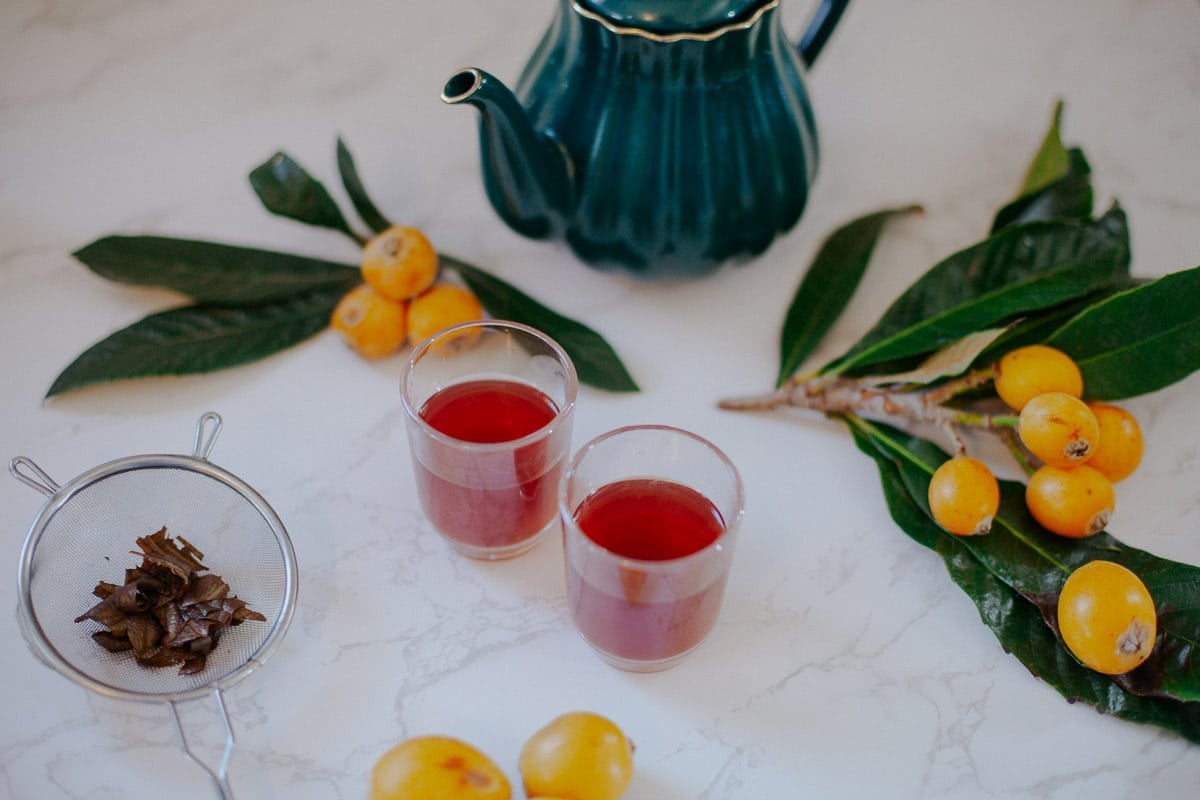
This herbal tea, known as Biwa Cha in Japan, is made not from loquat fruit as you might expect, but loquat leaves! Loquat trees are a member of the rose family and scientifically known as "Eriobotrya japonica". They are sometimes referred to as "Japanese medlar" or Japanese plums.
Although loquats are native to China, where loquat tea is quite popular, they are now cultivated all over the world. This delicious herbal tea can be light or dark in color, depending on the leaf-to-water ratio you use and how long you brew/steep it.
If you're tired of waiting for the fruit on your loquat tree to ripen, why not use the leaves to make this refreshing tea? Then try my new fig leaf tea recipe!

Jump to:
😍 Why You'll Love This Recipe
- Making loquat leaf tea is a great way to make use of not just the fruit of your loquat plant, but also the leaves!
- This herbal infusion is so easy to make and only takes a few minutes to brew!
- Loquat tea tastes delicious and is packed with health benefits.
- This tea is vegan and gluten-free.
- You can make this tea ahead of time, and it also works well as an iced tea!
🔖 Ingredients & Substitutions
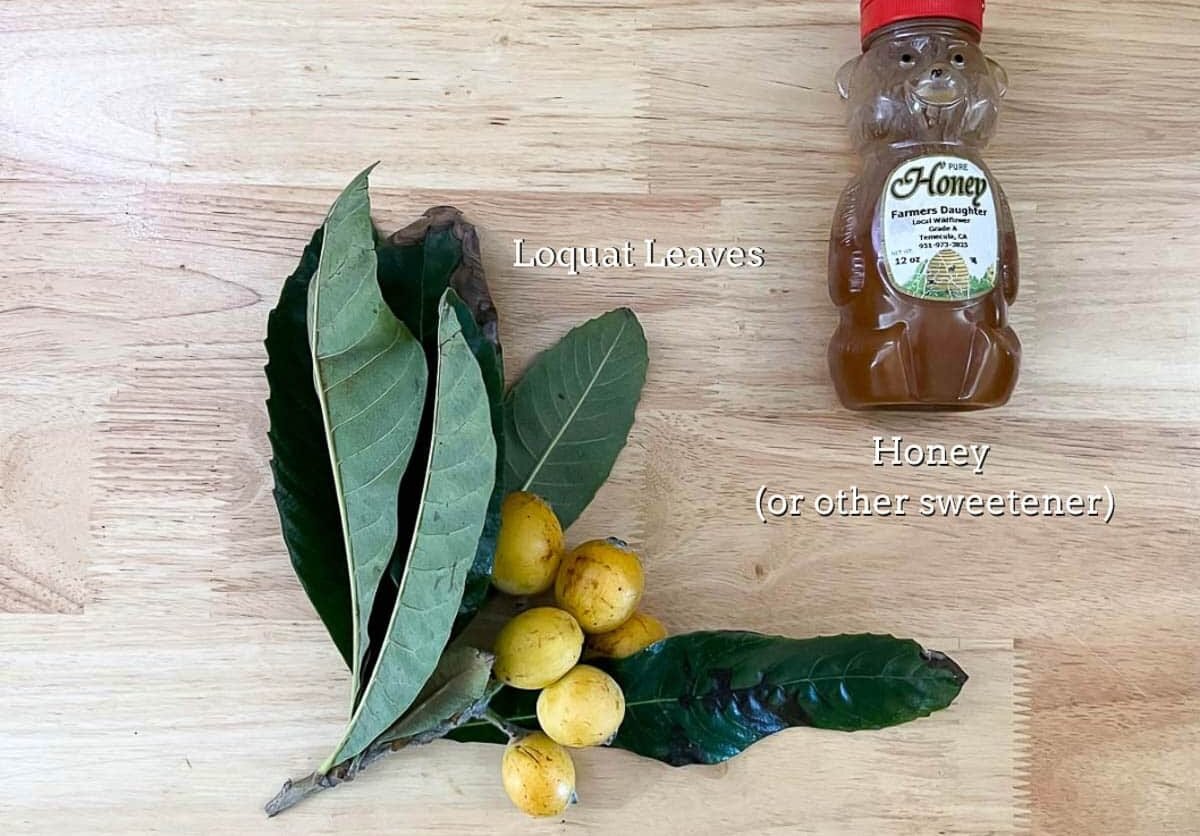
- Loquat Leaves: You'll need 2 to 4 fresh loquat leaves (depending on size) or 1 to 2 tablespoons of dried and crushed loquat leaves to brew 2 cups of loquat tea.
- Sweetener: Although loquat tea is naturally sweet, you may choose to add additional sweeteners such as honey or a low-calorie sweetener. You can also use honey syrup, whipped honey, or my sugar cubes for tea.
- Spices & Other Flavoring: If you want to flavor your loquat tea, you can add cardamom pods, a small piece of cinnamon stick, or dehydrated orange slices to the simmering tea.
🍯 Helpful Tools
- Saucepan or Tea Kettle
- Small strainer
- Tea Infuser
- Honey Dispenser
- Tea cup
☕️ How To Make Loquat Tea
Step 1: Pick fresh, medium-sized green loquat leaves, then rinse and dry them.
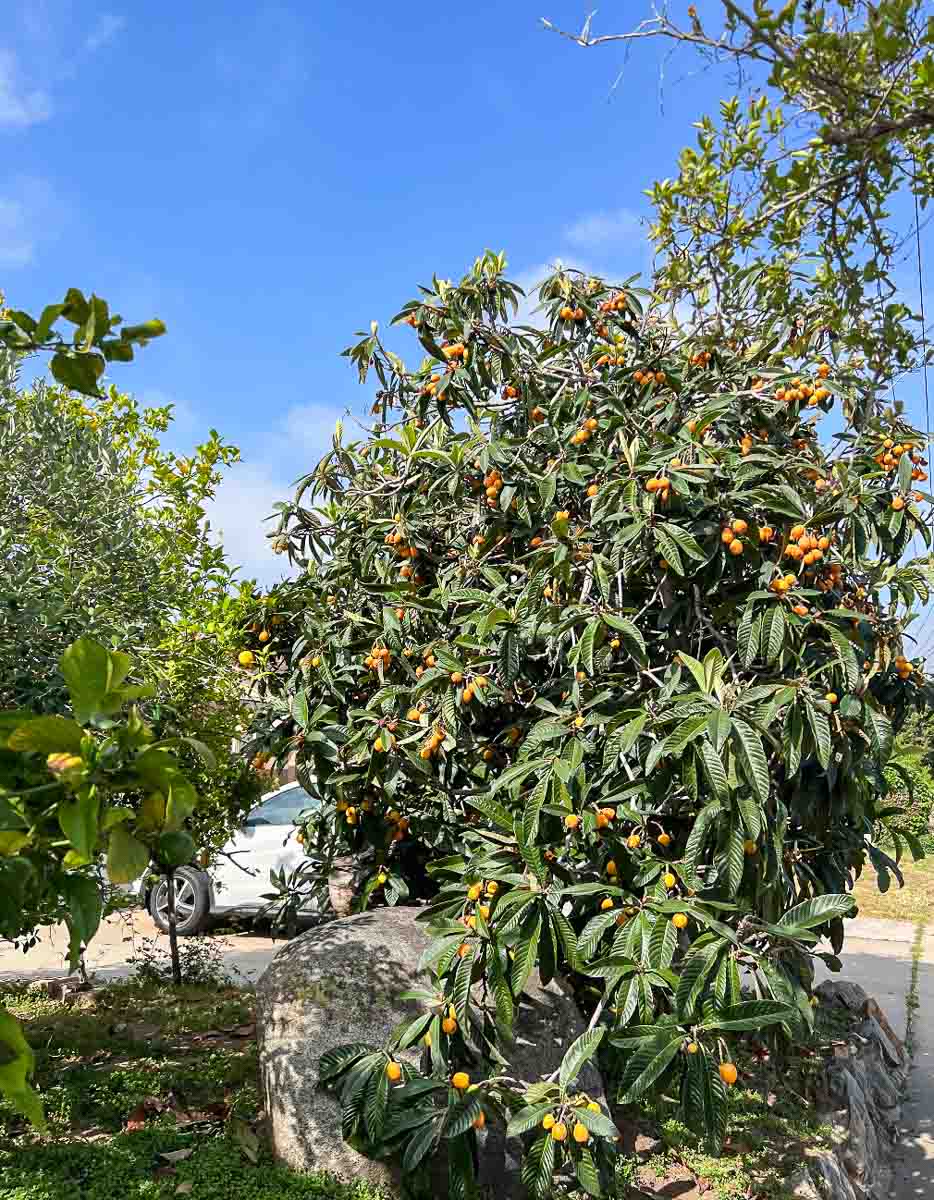
Step 2: Using a small knife, scrape the furry underside of the leaves to remove the tiny fibers. Remove the large veins in the middle of the leaves then slice or tear the leaves into small pieces.
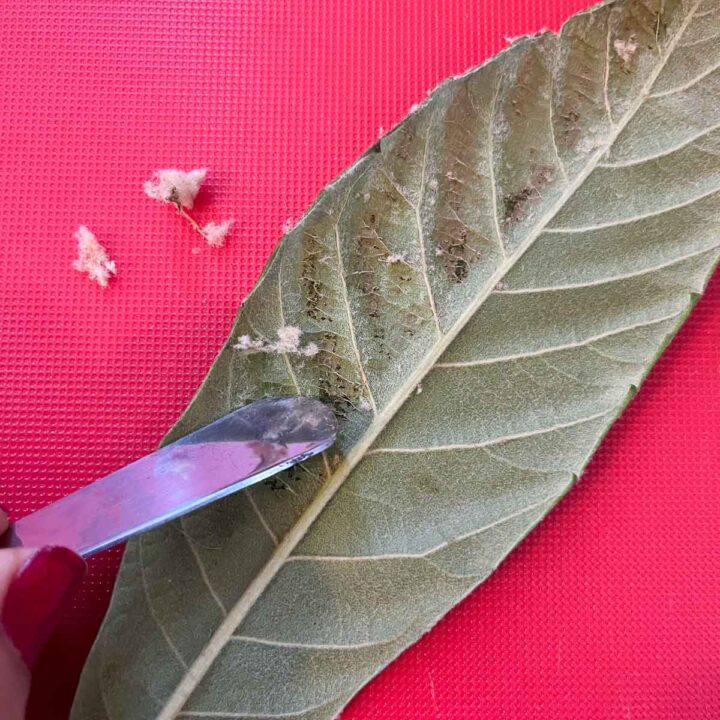
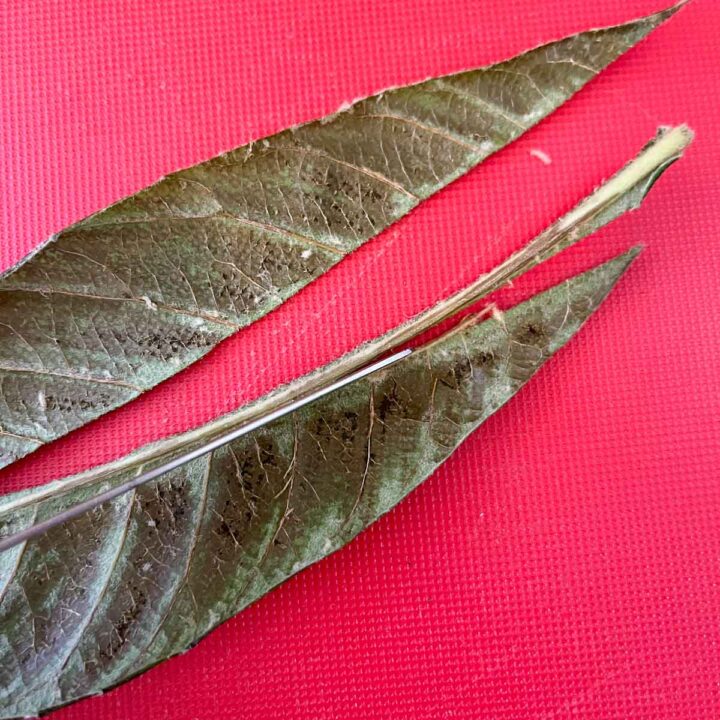
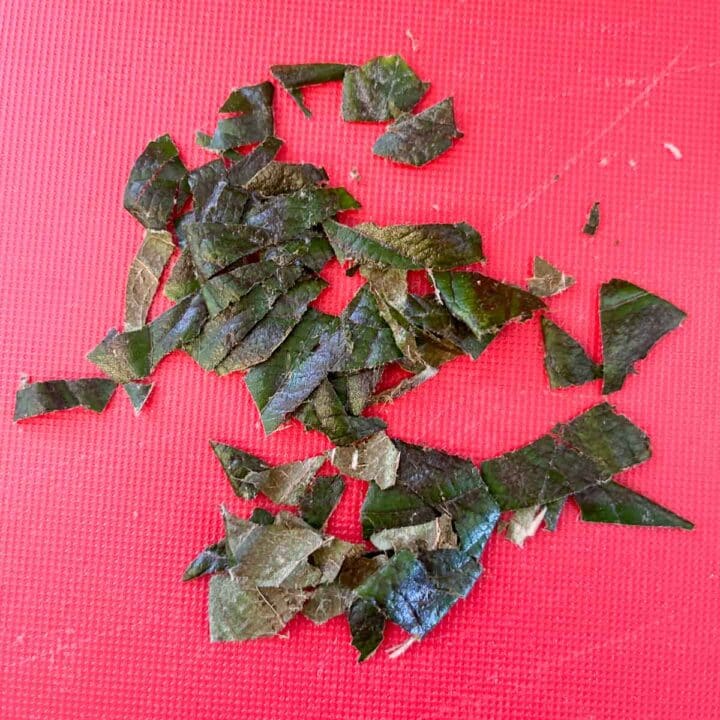
Step 3: Add chopped leaves to a small pot, saucepan, or cast-iron teapot along with fresh water. Bring to a boil, then simmer over low heat for 10 minutes. Turn off the heat, cover the pot, and allow the tea to steep for an additional 10 minutes.

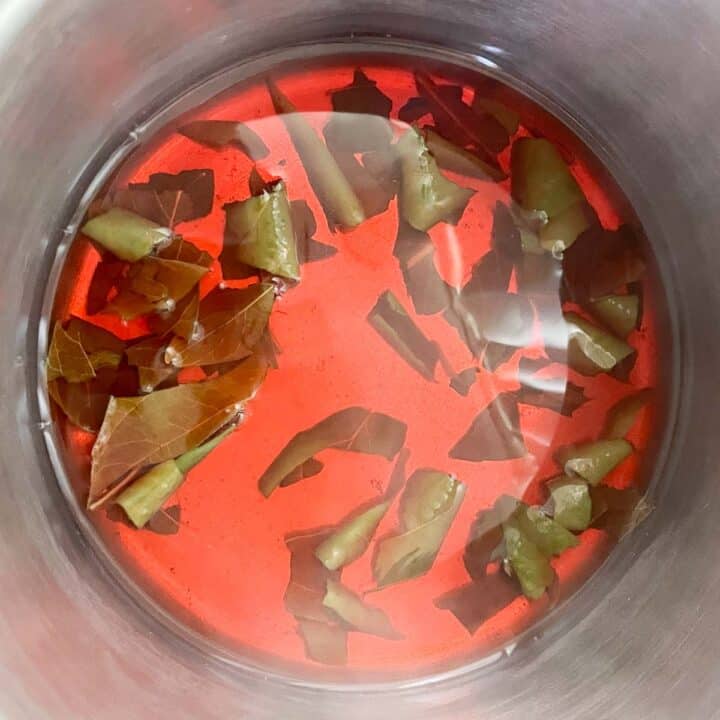
Pro Tip: The longer you boil and steep the tea, the darker and more concentrated it will get. It will also reduce due to evaporation. If it reduces too much or gets too concentrated, just add more hot water to dilute it.
Would you like to save this recipe?
Step 4: Strain the tea through a fine mesh strainer and serve in your favorite tea cup. Another option is to serve the loquat tea in a tall glass over ice.
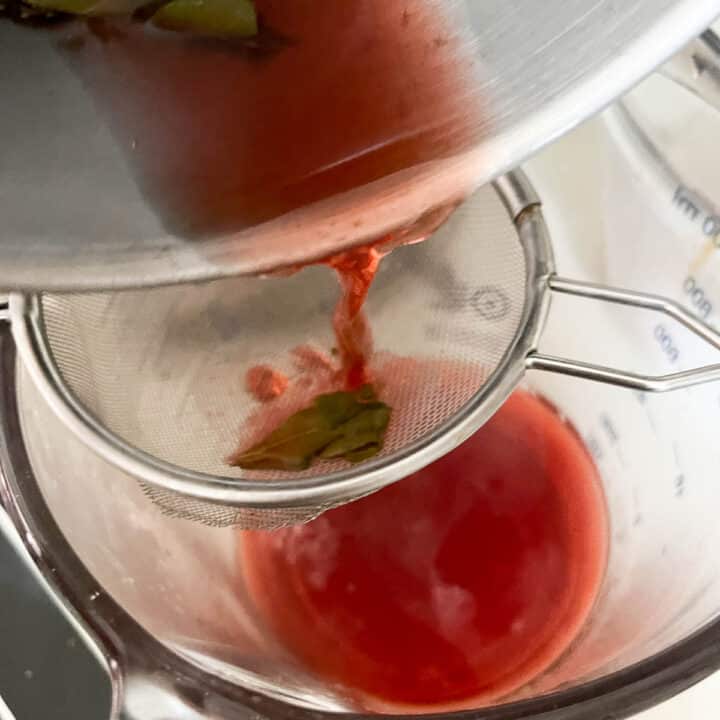
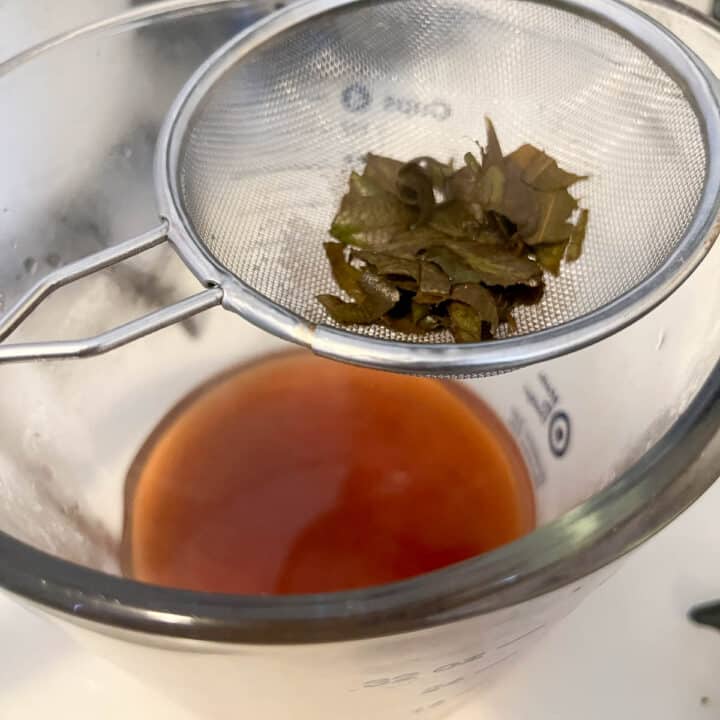
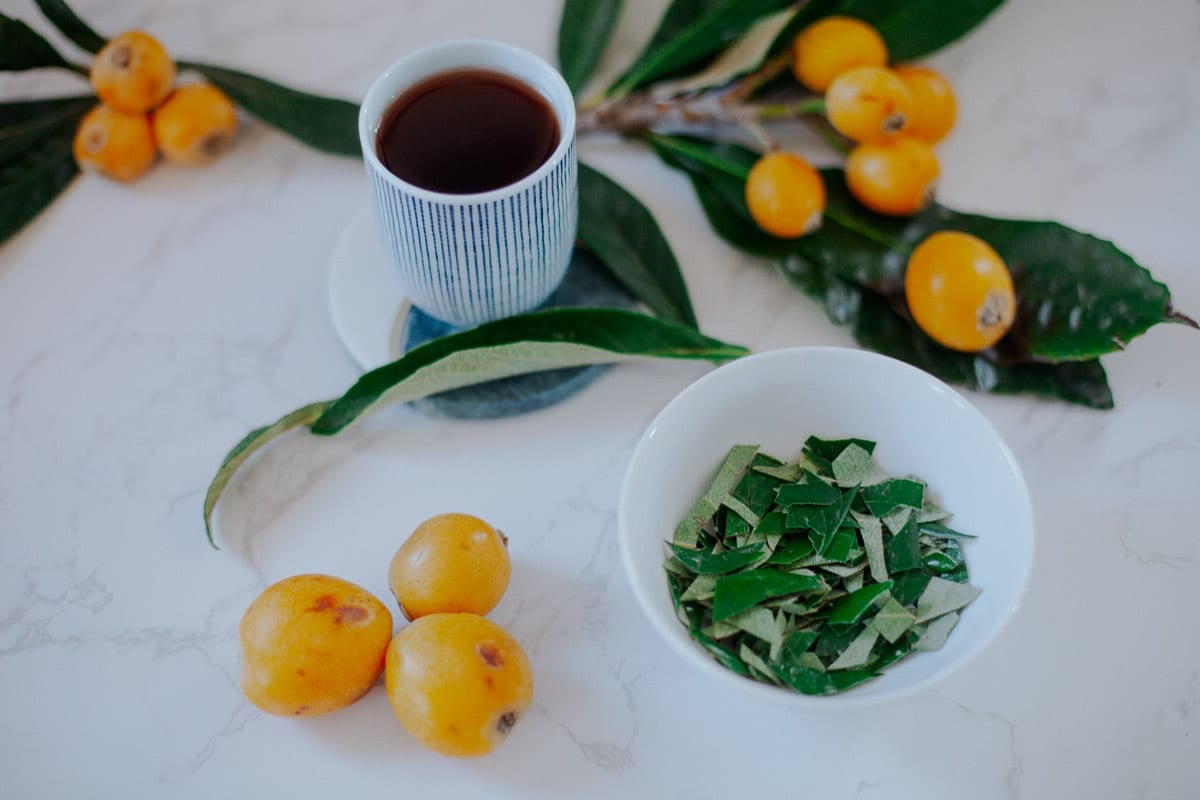
I love to sweeten my loquat tea with jasmine syrup. It's a match made in heaven. Another excellent option is this vanilla sugar recipe!
🤷🏻♀️ Recipe FAQs
Loquats are both sour and sweet, depending on how ripe they are. The flavor profile can be compared to peaches or mangoes. Loquat leaves, however, have a mild, earthy flavor, and make a surprisingly sweet tea!
Loquat leaf tea is naturally caffeine-free and has numerous health benefits, so drink up!
Loquat seeds are not fit for human consumption because they contain cyanogenic glycosides. In Italy, however, a loquat seed liqueur called Nespolino is prepared by soaking the seeds in grain alcohol. It has a bitter flavor, similar to amaretto (which is prepared by soaking almonds or apricot pits in alcohol).
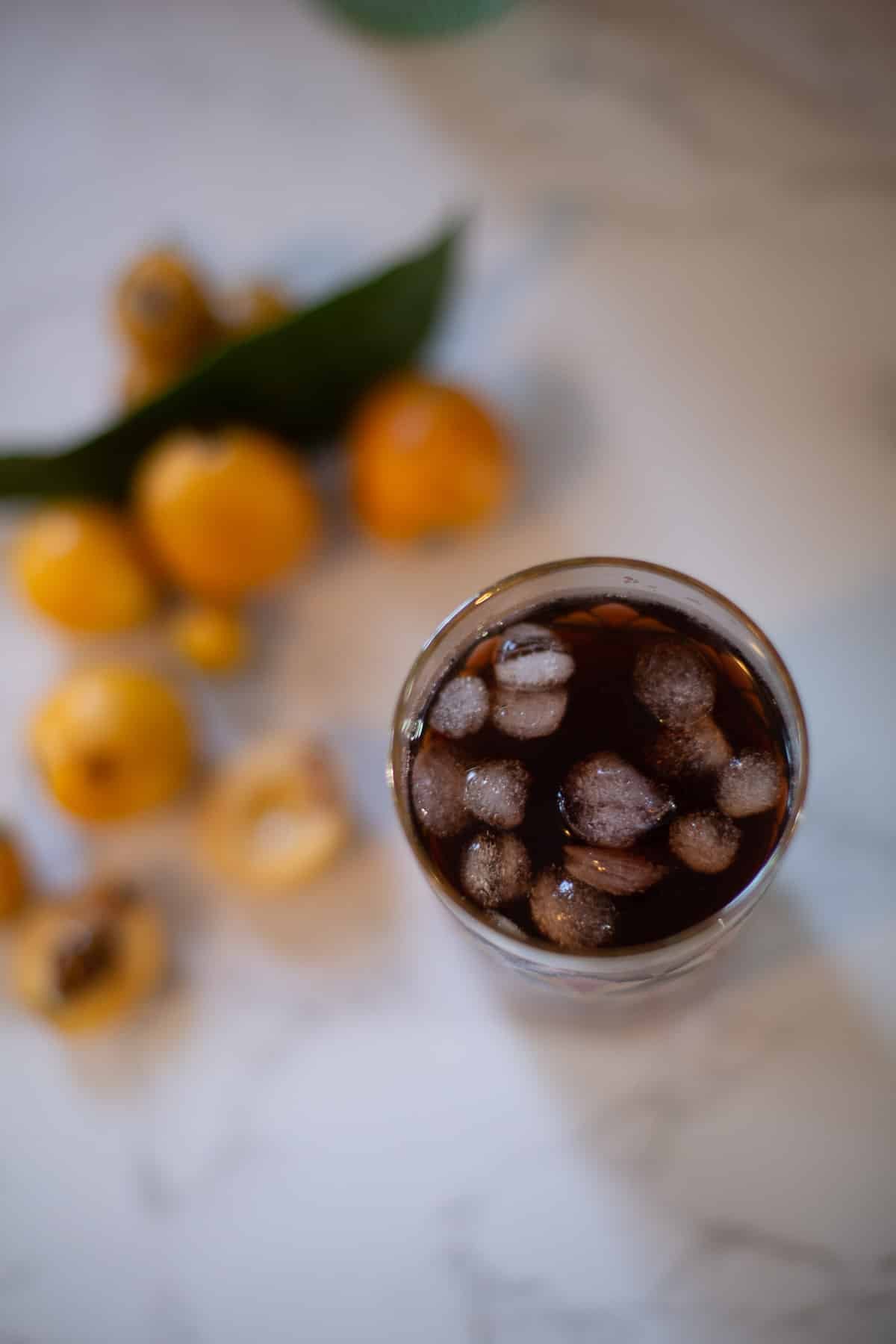
Looking for other exotic drinks? Check out this yummy lychee lemonade from Rachna at RachnaCooks.com & this honey grapefruit tea from Vladka at SimplyBeyondHerbs.com. You may also want to try this delicious Kashmiri Pink Chai.
🫖 Loquat Leaf Tea Benefits
Loquat leaves have been used in Chinese medicine for hundreds of years due to the fact that they are high in antioxidants that help boost the immune system. The Chinese have also used many parts of the tree, including the leaves, to treat blood sugar-related issues.
According to WebMD and healthline.com, these are some of the potential health benefits of loquat fruit and loquat leaf tea:
- Anti-inflammatory effects that can ease issues with the lungs and respiratory system, such as chronic bronchitis and coughs.
- Aids digestion and gastrointestinal ailments.
- Loquats contain carotenoids, which may help reduce inflammation and protect against heart disease.
- They also contain beta carotene, which aids in fighting cancer.
👩🏼🍳 Pro Tips
- Make sure to remove the furry hairs from the underside of the leaves before steeping them, as the hairs can irritate the throat.
- If you plan on foraging the leaves for later enjoyment, the fresh young leaves can be either air-dried or dried in the oven or a dehydrator. The dried leaves can then be crushed and stored in a jar for later use.
- If drying leaves for later use, you'll need to brew approximately 1 tablespoon of crushed and dried loquat leaves for each cup of tea. This amount can be adjusted depending on how light or strong you prefer your tea.
🌹 More Tea Recipes
If you love unique tea flavors, you'll want to try rosehips tea. It's light, floral, and both sweet and tart. Then there's pine needle tea, totally different. It's light, minty, and citrusy. Finally, if you love tart flavors, try brewing a cup of elderberry tea. It's got a beautiful red color and is pleasantly tart.
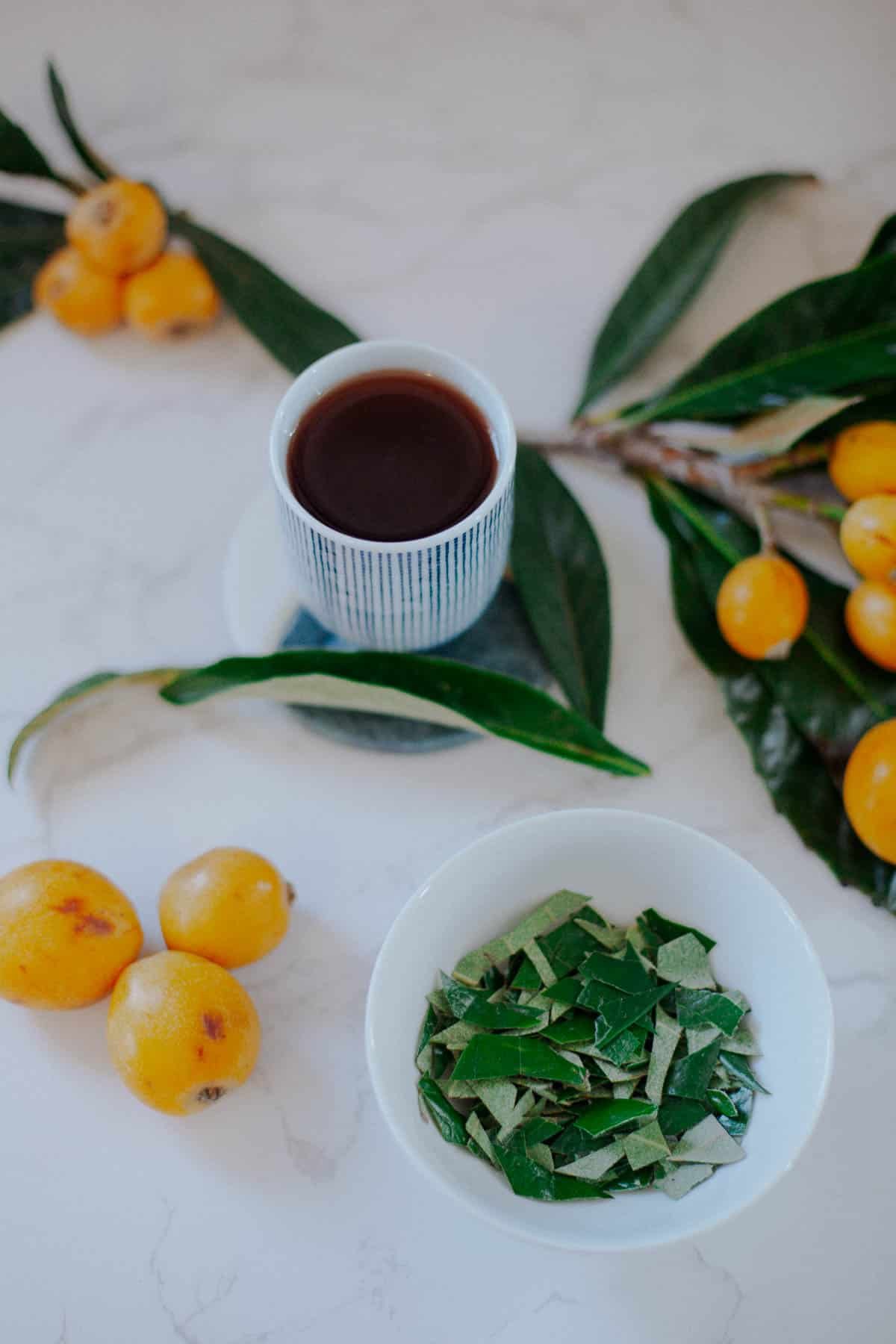
🌼 More Loquat Recipes
If you are looking for other tasty loquat recipes, give these recipes a try!
📖 Recipe
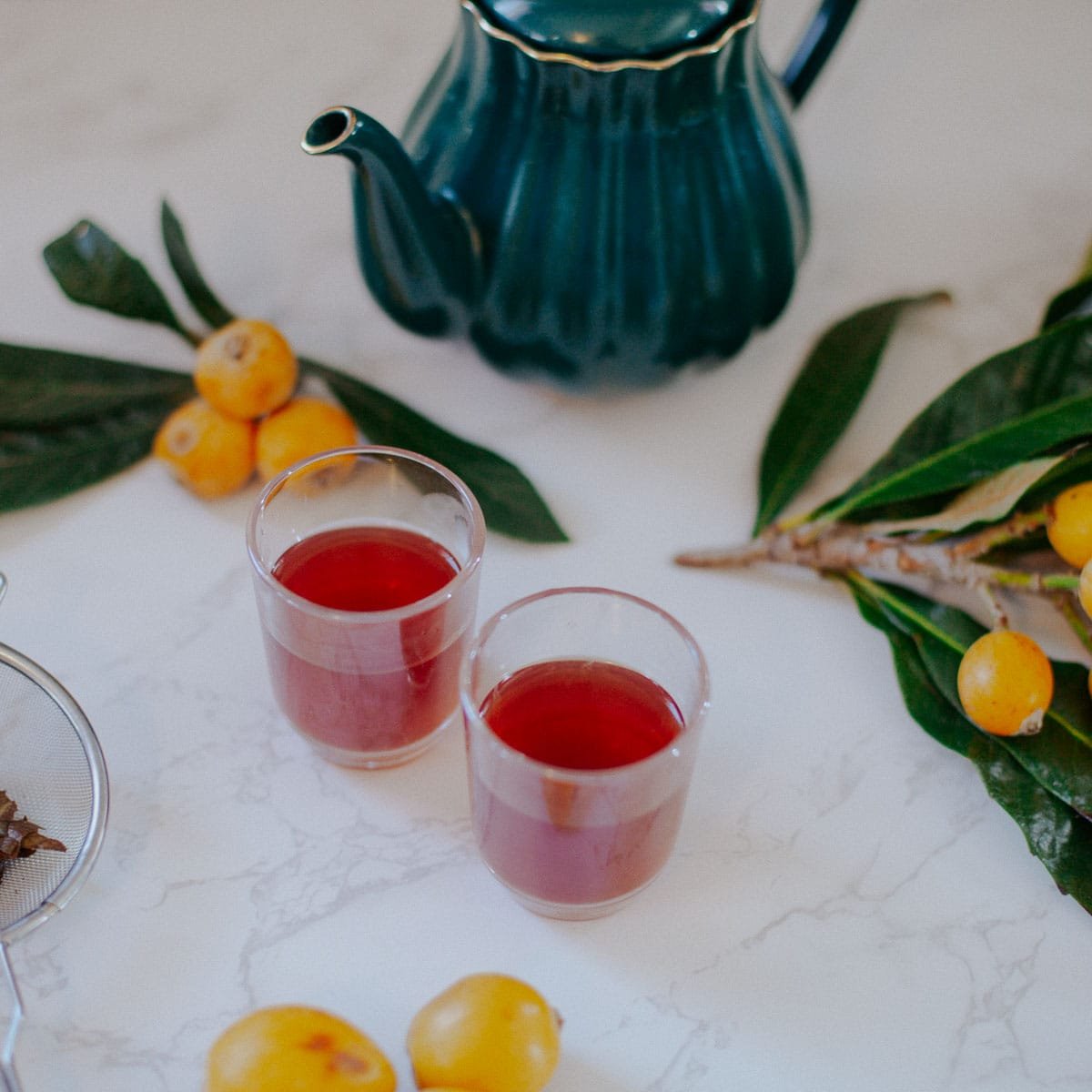
Loquat Tea Recipe
Ingredients
Equipment
Method
- Pick fresh, medium-sized green loquat leaves, then rinse and dry them.
- Using a small knife, scrape the furry underside of the leaves to remove the tiny fibers. Remove the large veins in the middle of the leaves then slice or tear the leaves into small pieces.
- Add chopped leaves to a small pot, saucepan, or a cast iron teapot along with fresh water. Bring to a boil then simmer over low heat for 10 minutes. Turn off the heat, cover the pot, and allow the tea to steep for an additional 10 minutes.
- Strain the tea through a fine mesh strainer and serve in your favorite tea cup. If you prefer, you can serve the tea in a tall glass, over ice.
Nutrition
Notes
- Make sure to remove the furry hairs from the underside of the leaves before steeping them, as the hairs can irritate the throat.
- If you plan on foraging the leaves for later enjoyment, the fresh young leaves can be either air-dried or dried in the oven or dehydrator. The dried leaves can then be crushed and stored in a jar for later use.
- If drying leaves for later use, you'll need to brew approximately 1 tablespoon of crushed, dried loquat leaves for each cup of tea. The amount can be adjusted depending on how light or strong you prefer your tea.
- The longer you boil and steep the tea, the darker and more concentrated it will get. It will also reduce due to evaporation. If it reduces too much or gets too concentrated, just add more hot water to dilute it.

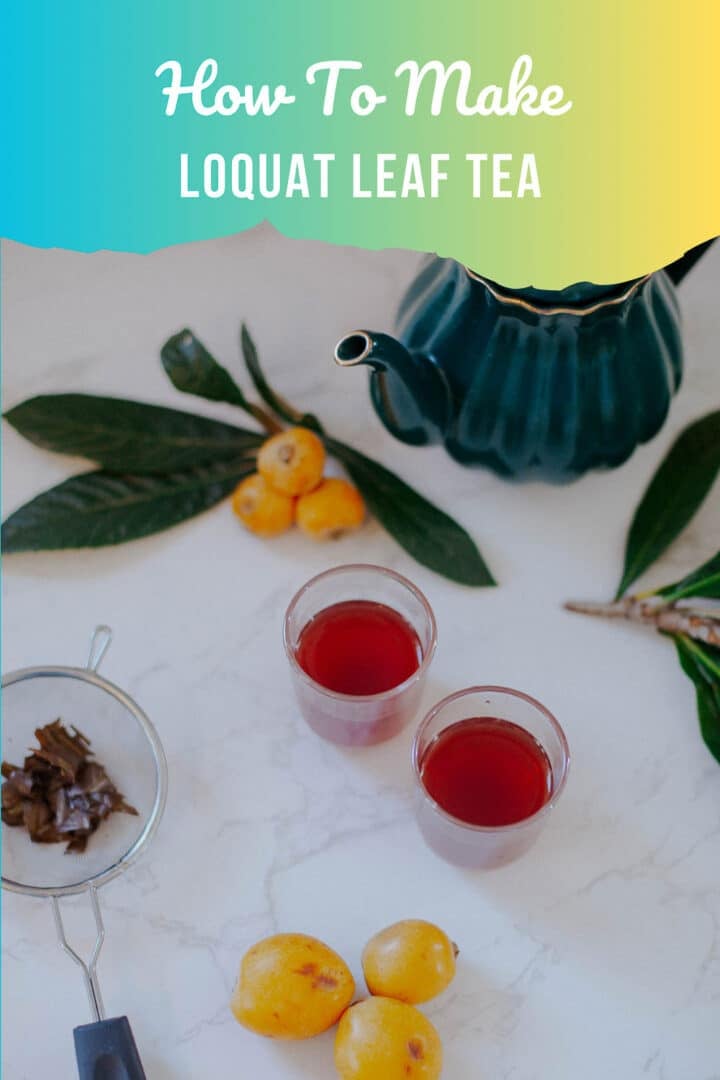
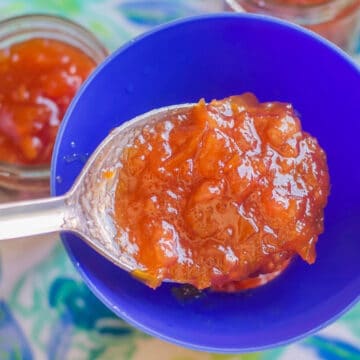

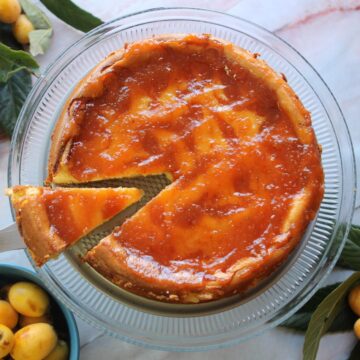

Tricia FRANKLIN says
This tea sounds delicious. I am going to make it as our loquat tree is full of healthy leaves and fruit.
Hilda Sterner says
You're lucky, Tricia, I'd love to have a loquat tree. Good luck!